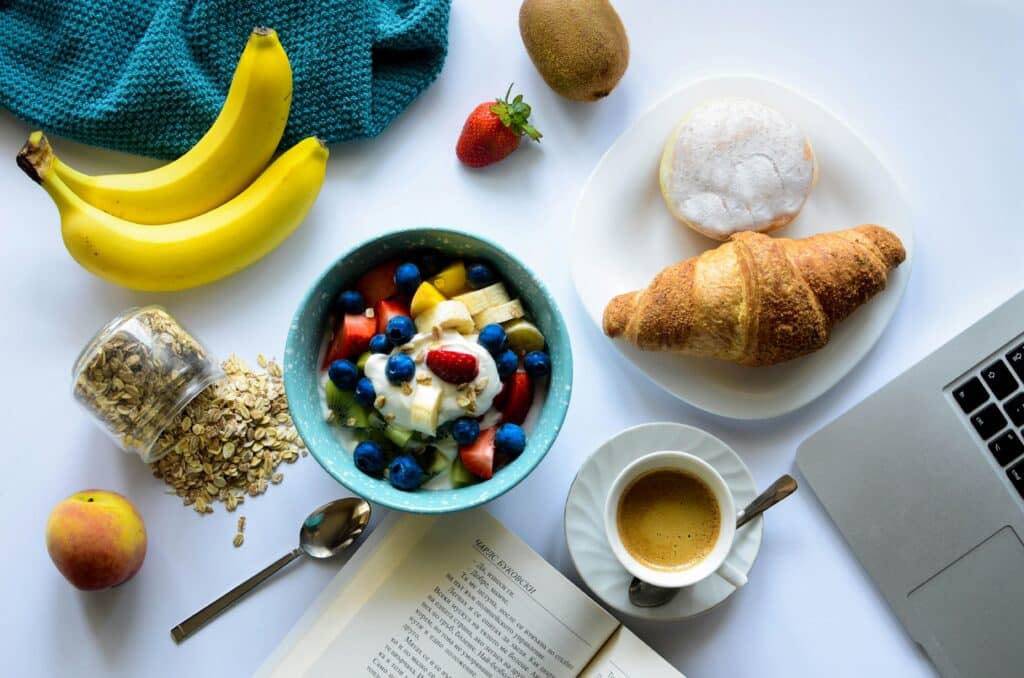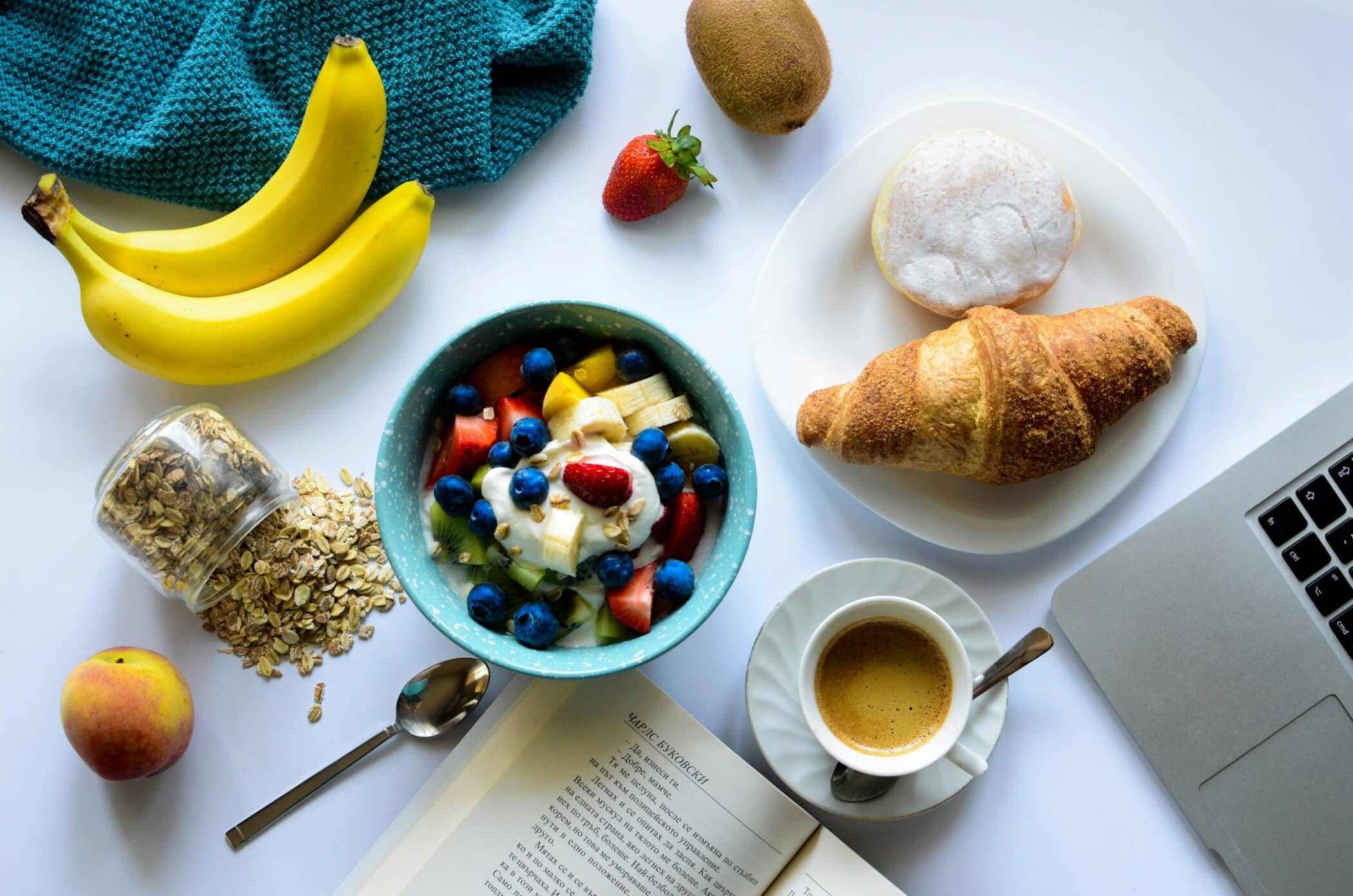
Athletes or physically active individuals with diabetes may face many difficulties that other athletes do not have. Regular exercise benefits people with diabetes in many ways. But, it can make controlling blood sugar difficult, especially for younger athletes. This is where meal plan for diabetes comes in.
Insulin needs can be affected by inconsistent nutritional intake and physical activity levels and other anti-insulin hormones. That is why diabetic athletes need to pay a little bit more attention to the type of training and food that they eat.
However, eating a balanced, healthy diet even when you have diabetes, does not have to mean that you can`t eat foods that taste good. We just need to find a menu that has a good balance of fat and protein and a great source of fiber. With the right portion sizes of all the necessary nutrients, everyone can enjoy their meals.
Table of Contents
Things that diabetic athletes need to pay attention to
Active diabetics need to be aware of the symptoms and signs of hypoglycemia. Additionally, they need to make sure that their teammates or workout partners are aware of that, too. Typical symptoms and signs may include:
- Shakiness
- Headache
- Fatigue and weakness
- Hunger
- Confusion
- Irritability
- Dizziness
- Impaired vision
How can nutrition help
Firstly, following the right meal plan for diabetes will help athletes to control their blood sugar and they will be able to achieve their desired performance. If they consume the right types of food before, during, or after the training, blood glucose levels will remain at a good level. This will also help with recovery and reaching maximum performance.
Secondly, all meals and snacks should have a source of protein, such as nuts, cheese, eggs, and meat. Source of carbohydrates, like fruit or whole grains so the blood glucose can be at balance and there won`t be any rapid swings in levels.
These snacks and meals need to be low-fat as possible, so athletes should avoid large amounts of any food, especially fried foods, butter, cream sauces, nut butter, and similar food. For example, beans or flavored milk will give both carbohydrates and protein.
What to do and eat before, during, and after training
What you eat, especially snack depends on a few things:
- How long will you exercise
- How high is your blood sugar
- What time of the day do you plan to have a training
- How your body reacts to exercise
Before you start your training, monitor your blood glucose and if it is below 70, have a quick snack. But, it if is above 240, check ketones in your urine and, if they are present, avoid activity.
Eat a carbohydrate-based meal, or a snack, within one to three hours of exercise. Peanut butter and jelly or greek yogurt with granola, lunchmeat sandwich, apple with nut butter, cottage cheese and fruit, or peanut butter crackers.
During your training, keep fresh or dried fruit, crackers, hard candies, dextrose tablets, and granola bars, with you as a form of carbohydrates. Check your blood glucose and take 15-30g of carbohydrates if there are changes in glucose or possibly performance.
If your training is longer than an hour, make a plan to have a snack during your activity. Therefore, if you have an event that lasts all day, plan six small meals that include protein and carbohydrates (nothing with fatty foods and high sugar). Small amounts of juice or sports drink, hard candies, a fruit cup of applesauce, dried fruit, or banana, will do the trick.
After you finish your training, be sure to eat something that will replenish your glycogen stores and that will prevent hypoglycemia. Check blood glucose levels often because exercise-induced hypoglycemia may occur up to 48 hours after activity. Some diabetics may experience this after the stress of exercise or competition.
It would be a good idea to eat chicken and rice, turkey and pasta, meatballs in marinara, grilled potatoes, chocolate milk, scrambled eggs, and fruit. This and similar food will help you get adequate nutrients.
Hydration during the whole day
You probably heard this one a hundred times. But, that only means that it is essential. You must remain adequately hydrated throughout the whole day. There are different variables in play with every person, and all diabetics will react differently when it comes to activity.
If you are using insulin, your endocrinologist or physician needs to be aware of the activity levels and regimen of your activity, so that insulin can be adjusted according to that. Hydrating properly can play a major role in controlling your blood glucose and athletes can safely achieve great performance at the highest level.
What kind of meal plan for diabetes is the right one
You don`t have to follow a specific diet, but your meal plan for diabetes should cover three important parts. Healthy food, healthy amounts of that food, and healthy timing of your meals.
As a result, your blood sugar will stay at a healthy level, you will have a healthy weight, and the risk of heart disease will be low. This way of food intake will control, prevent, and even might reverse the disease. This will work with all people not just the ones with diabetes. Of course, it will help with your performance as an athlete, too.
Recommended food for athletes with diabetes
Four types of nutrients that affect your blood sugar are protein, fat, fiber, and carbohydrates(starches, sugars, and fiber in food). Carbohydrates raise blood sugar faster than fats and proteins. They have the biggest effect on your blood sugar, too. Protein, fiber, and fat may curb the rise in blood sugar after you eat.
The best idea is to go for variety. If you eat a mixture of protein, fat, and carbohydrates, you will manage your blood sugar better and you will stay full longer. Just make sure to choose quality carbohydrates and smart fats. Aim for something like this:
- Hearth healthy food like salmon and tuna
- Smart fats like fish, nuts, seeds, extra virgin olive oil, olives, or canola oil.
- Fiber-rich food like fruits, vegetables, beans, peas, nuts, and whole grains
- Healthy carbs like vegetables, whole grains, beans, or fruit
After every meal, you should check your blood sugar levels. Try to find patterns between the things that you eat and drink and the levels of your blood sugar after. If you can, track how many servings or grams of carbohydrates you eat with each meal and try to eat the same amount for every next meal. To clarify, that is also the way of taking charge of your blood sugar.
Food that you should avoid
There are four groups of ingredients found in food, that everyone, but especially people with diabetes should avoid:
Trans fats
These are also called hydrogenated or partially hydrogenated oil. They are liquid oils that become solid fat. Therefore, food like shortening and margarine contains trans fats, also processed foods like cookies, chips, fast food french fries, and similar.
Sodium
You need to watch salt intake, too. Additionally, that is also a part of healthy eating. When you eat less sodium, you will prevent and treat high blood pressure. Therefore, read labels and find foods that are low in sodium.
Cholesterol
Natural cholesterol is our blood plus the cholesterol that comes from food makes up cholesterol count. Also, we need to watch out for high-fat dairy and high-fat animal products such as liver, organ meats, egg yolks, and others.
Saturated fats
These fats raise our blood cholesterol. High-fat animal protein like sausage and bacon, high-fat dairy like butter, full-fat cheese, ice cream, coconut oil, chicken skin, and similar food contains saturated fat.
Meal ideas for meal plan for diabetes
You can put together a high-fiber carbohydrate and some lean protein and good fats:
Breakfast
High fiber carbs:
- Whole-grain cereal with fruit
- Bread, bagel, English muffin
- Whole-grain waffles
- Pancakes with fruit
Lean protein(saturated fat is low):
- High omega-3 egg with two egg whites
- Vegetables like broccoli, spinach, and tomatoes
- Low-fat milk, part skim-milk to add in your omelet
- Nonfat yogurt with fruit or cereal
Smart fats:
- Nuts for cereals or yogurt
- Avocado added to your omelet
- Extra virgin olive oil
- Canola oil in whole-grain muffins, waffles, or pancakes
Lunch
A sandwich or wrap with whole-grain bread or tortilla and lean protein:
- Roasted turkey, lean beef, or pork.
- Part skim-milk cheese or soy cheese
- Water-packed tuna in vinaigrette, light mayo, and yogurt
Lunch with bean base:
- Hummus and whole-grain bread
- Bean burrito with whole-grain tortilla
- Lean-meat or vegetarian chili or bean stew
Salads made with:
- Lots of vegetables
- Dark green lettuce
- Lean meat, beans, fish, cheese, avocado, nuts
- Dressing made with extra virgin olive oil, yogurt, or canola oil
Dinner
Lean protein choices:
- Skinless poultry(grilled, baked or stir-fried)
- Lean beef or pork, with no visible fat
- Baked or grilled fish
- Eggplant parmesan, vegetarian pizza, vegetable lasagna, enchiladas, whole wheat crust, all with part skim-milk cheese.
Smart fats:
- Avocado or olives with the main course or side dishes
- Small amounts of canola or extra virgin olive oil
- Nuts added to the main course or side dishes
High-fiber:
- Whole wheat bread, tortilla, buns, or pita bread
- Cooked grains like quinoa, brown rice, bulgur, barley
- Dark green lettuce for a side or salad
- Colorful vegetables
- Fresh fruit
Healthy and delicious snacks
- Frozen grapes
- Canned tuna on whole grain crackers
- Cucumber with hummus
- Popcorn
- Apples with peanut or almond butter
Conclusion
Regular physical activity is something that is of great importance in managing diabetes. Therefore, as an athlete, you probably know how much. That is to say, your fitness routine, training, exercising, or any other activities do not have to `suffer`. You can manage both with the tips and ideas above.
Paying attention to what you eat is an important part of managing your diabetes, too. However, no single plan works for everyone which is why always have a variety of nutrient-rich foods in the right amounts.
Before you make any big changes always consult with a doctor or a professional. We are also here if you need advice, a more specific meal plan, or additional ideas. An adequate meal plan for diabetes is required for every athlete, and even more so when they have diabetes. Stay determined and anything is possible.

